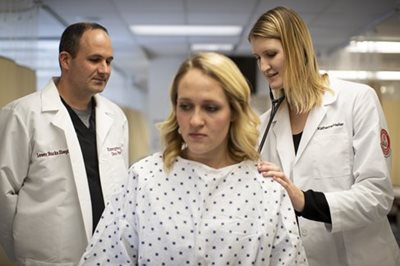
Dr. Daniel Pavlik, left, was one of the
faculty panelists for the webinar.
Dr. Scott Levy recently got an email from a fellow doctor who explained in detail what it was like to watch a nurse comfort a dying COVID-19 patient. The nurse was crying, but because she was wearing full PPEs and a “papper” (powered air-purifying respirator, or PAPR), she was unable to wipe the tears away from her own face.
It illustrated one of the many aspects of dealing with the coronavirus — the mental health effects the pandemic has had on healthcare workers, patients and their families — that was discussed during a recent COVID-19 online provider panel for Salus University’s Physician Assistant (PA) Studies students, which also included Salus PA alumni as speakers on the panel.
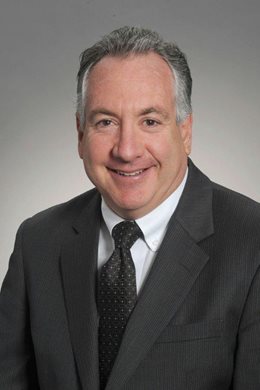
Panelist Dr. Scott Levy,
chief medical officer of
the Doylestown Health System.
Stressing attention to the mental health issues such as depression and anxiety during the pandemic has been a constant theme for University president Michael Mittelman, OD ’80, MPH, MBA, FAAO, FACHE, in his weekly updates to the Salus community. And, it’s definitely on the minds of many others in the healthcare industry.
“In my role, I’ve been concerned about the impact that this is having on healthcare workers,” said Dr. Levy, chief medical officer of the Doylestown Health System. “They are now completely consumed with it wherever they go. It’s very difficult for everybody and I worry about the healthcare providers as much as the patients and their families.”
More than 100 students from the classes of 2020 and 2021 signed up to listen to healthcare professionals talk about their experiences on the front lines of the pandemic. Students were able to submit questions in advance to the panelists, which were answered throughout the 90-minute presentation.
“The reasons for this webinar is that throughout the medical community, students in all areas have been asked not to participate and have been removed from their clinical rotations,” said John J. Fitzgerald III, DO, FACOG, associate director of the University’s PA program and associate professor, who moderated the discussion. “It’s been hard for the clinical students. They hear in the media what’s going on, but we thought it would be very poignant if they could hear some first-hand knowledge from practitioners who are out there every day on the frontlines and from our faculty members that are working in the different aspects of this healthcare situation.”
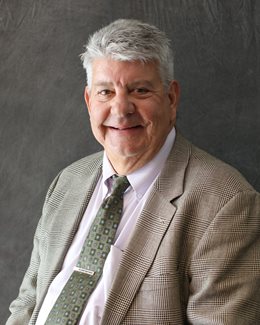
Dr. John J. Fitzgerald III, DO, FACOG,
associate director of the University’s
PA program and associate professor,
moderated the webinar.
In addition to Dr. Levy, the panelists included:
Chelsea Fletcher, MMS ‘19, an emergency room PA in Hoboken University Medical Center, Hoboken, N.J.
Caroline Slattery, MMS ‘19, an emergency room PA for Einstein Healthcare Network in Philadelphia and its surrounding areas.
Jennifer Heibel, MMS ‘15, a PA who works at the Mayo Clinic in Minnesota on the palliative medicine team.
Sean Yaeger, MMS ‘13, a PA who works for Suburban Geriatrics, a geriatric internal medicine group in the Montgomery County, Pa., area.
Amanda Sadowl, MMS ‘14, a PA who works for Suburban Geriatrics that serves two nursing homes in York, Pa.
Daniel Pavlik, MSPAS, DMS, PA-C, associate professor/director of Didactic Education for the University’s PA program who also works in the emergency room at Virtua Our Lady of Lourdes Hospital in Camden, N.J.
Jeanne-Marie Pennington, MSPAS, PA-C, clinical coordinator in the University’s PA program who works in the emergency room one day a week at Phoenixville Hospital in Chester County, Pa.
Cara Orr, MMS, PA-C, assistant professor in the University’s PA program, who works one day a week in family medicine for Temple University Hospital/Temple Health.
Each healthcare professional detailed their personal experiences of being in the community battling the pandemic in the context of the questions submitted by students.
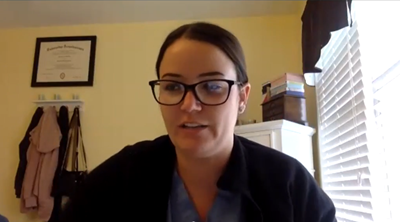
Among the questions included:
“The most common symptoms we’re seeing is a low-grade fever, dry cough, body aches and shortness of breath,” said Fletcher. “But over the course of seeing these patients, some other symptoms I’ve seen a lot of include diarrhea, lack of taste and smell and elevated aspartate aminotransferase (AST) and alanine transaminase (ALT).”
The proning of patients — putting them in the prone position, in which the person lies flat with the chest down and the back up — seems to be having success in the battle against the virus, especially for patients who are on ventilators. Dr. Levy cited one statistic that showed on average a 20 percent and 30 percent improvement in FiO2 — the concentration of oxygen that a person inhales — once patients are in the prone position.
“We are encouraging our inpatients who are doing moderately well and are semi-mobile to prone themselves as much as possible,” said Yaeger. “There are a few different protocols that have come out: spending 30 minutes on the right side followed by 30 minutes prone followed by 30 minutes on their left side. Then 30 minutes in a seated, upright position. All to take stress off of that typical supine positioning, opening up some of the smaller airways and increasing pulmonary pressures.”
Other questions from students included: What has the experience been like with shortages of PPEs, ventilators and healthcare workers and how will this affect students re-entering clinical rotations? And how will this pandemic change healthcare?
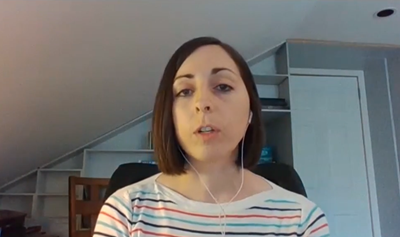
“Telemedicine will certainly become a more ‘normal’ in our care. For a lot of patients, it will offer them a lot more accessibility, especially older patients with physical limitations or transportation issues,” said Orr, about how the pandemic has forced changes on healthcare providers. “Moving forward, this might allow us to be in better contact with them. However, it isn’t the same as seeing the patient in the office. Not being able to examine them is certainly a drawback.”
Although he hesitated to put a time frame on when students can get back to their clinical rotations at Doylestown Hospital, Dr. Levy offered that it’s unlikely for at least the next 60 days, depending on how the situation continues to evolve.
But he did offer advice to students to take everything in right now - they are witnessing and living through a unique time in their training.
“This is an opportunity to watch something that very few of us ever get to do in real time — to watch the evolution of a new disease,” said Dr. Levy. “When I was in medical school, I was always told if you understood the history of tuberculosis, you understood medicine, because there was so much evolution in the learning of that disease. But here in real time, we’re learning about a brand new disease, and all the mystery and confusion and the ignorance we now have about it is just part of the exploration and discovery that really makes it special.”